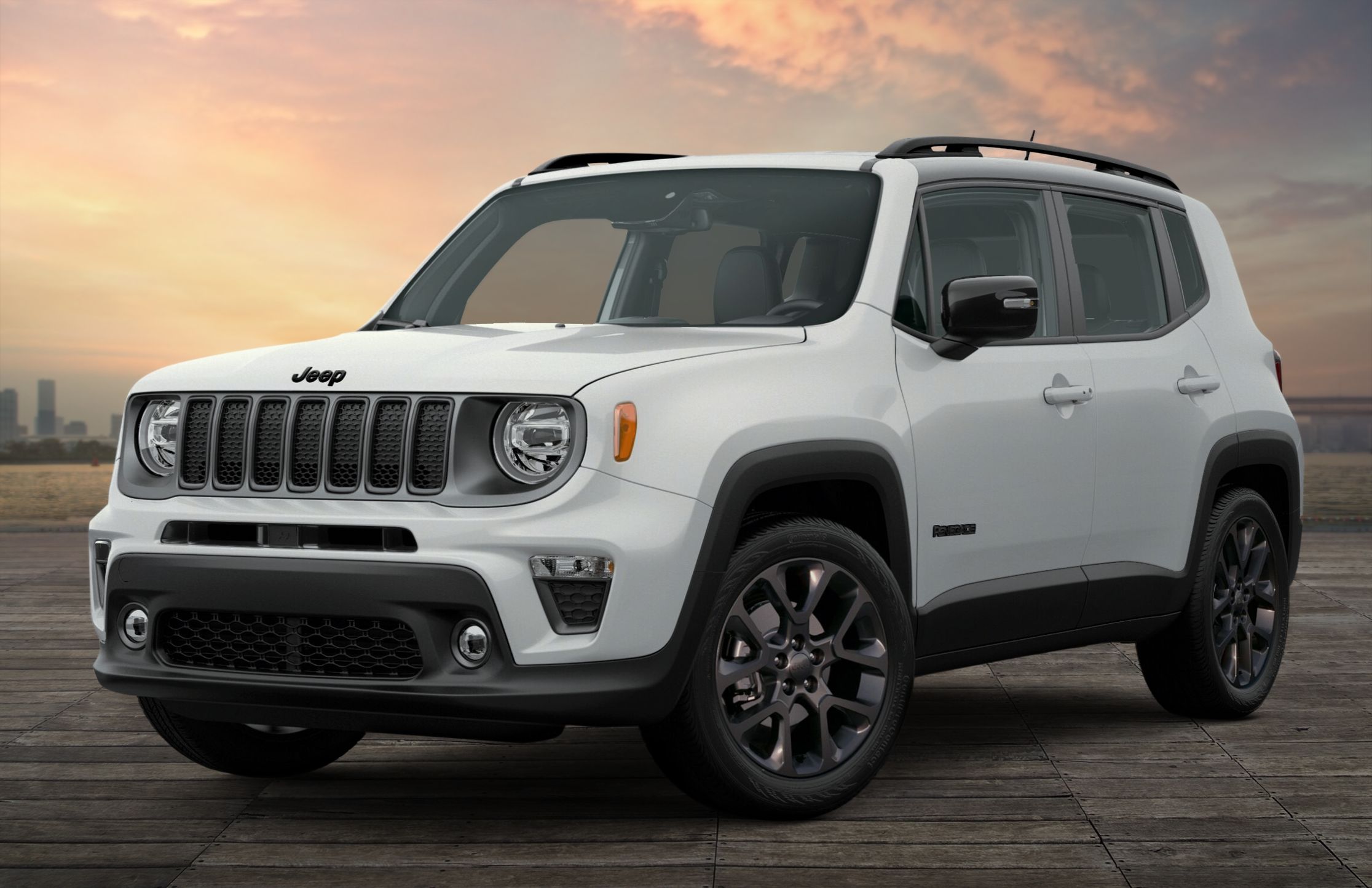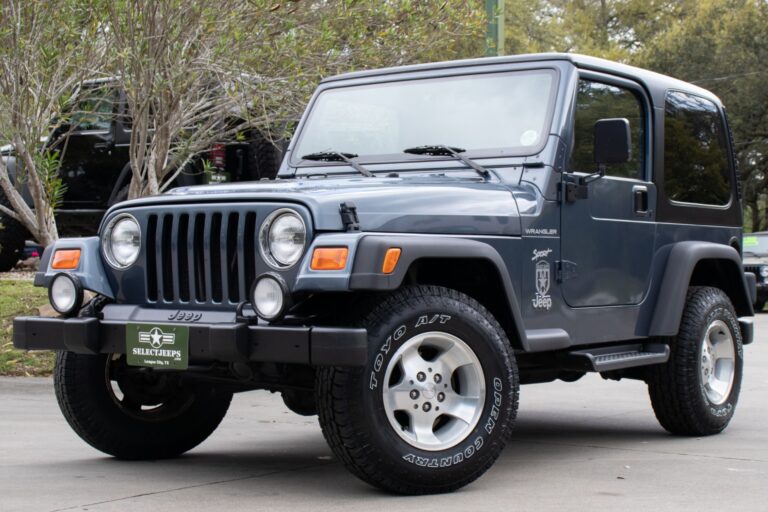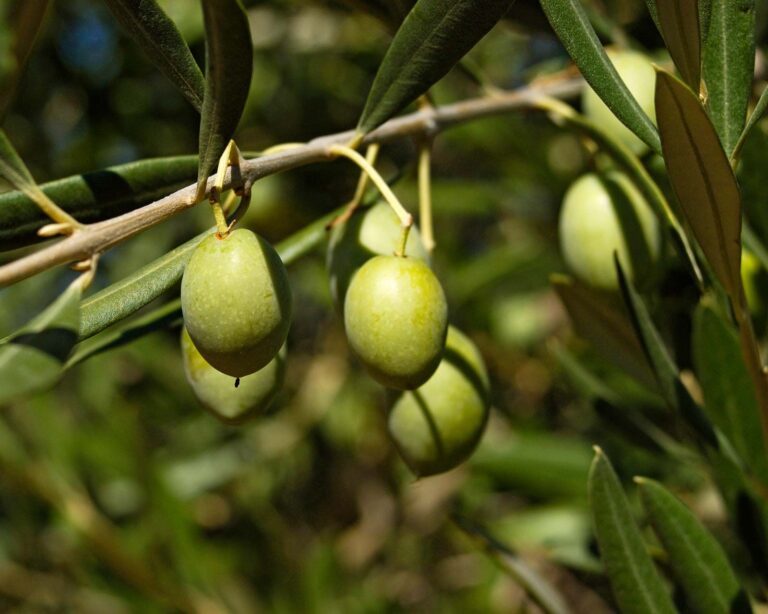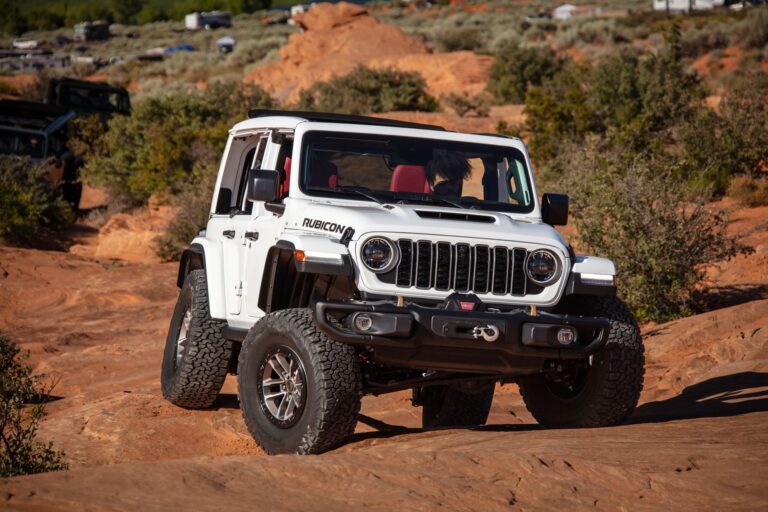Jeep XJ Axles For Sale: A Comprehensive Buyer’s Guide
Jeep XJ Axles For Sale: A Comprehensive Buyer’s Guide jeeps.truckstrend.com
The Jeep Cherokee XJ, produced from 1984 to 2001, holds an almost mythical status among off-road enthusiasts. Renowned for its robust unibody construction, compact size, and impressive capability, the XJ has become a cornerstone of the 4×4 community. Central to its legendary status, and often a point of both strength and weakness, are its axles. Whether you’re restoring a classic XJ, upgrading for more extreme off-roading, or simply replacing a damaged component, the market for Jeep XJ axles for sale is vibrant and diverse.
This comprehensive guide will delve into everything you need to know about finding, evaluating, and purchasing XJ axles. From understanding the various types and their inherent strengths and weaknesses to navigating the buying process and considering installation, we’ll equip you with the knowledge to make an informed decision and ensure your XJ remains a formidable force on and off the trail.
Jeep XJ Axles For Sale: A Comprehensive Buyer’s Guide
Why Are XJ Axles So Sought After?
The enduring popularity of the Jeep Cherokee XJ directly translates to a consistent demand for its axles. Several factors contribute to this:
- Age and Wear: Many XJs are now decades old, meaning their original axles have endured years of use, abuse, and exposure to the elements. Components like unit bearings, ball joints, and seals wear out, and axle tubes can bend under stress.
- Off-Road Prowess and Upgrades: The XJ is a prime candidate for off-road modification. Stock axles, particularly the notorious Dana 35 rear, are often the weakest link when larger tires, lockers, and more aggressive driving styles are introduced. Enthusiasts frequently seek stronger alternatives or upgraded versions of the stock axles.
- Cost-Effectiveness: Compared to building custom axles or purchasing entirely new aftermarket units, sourcing used XJ axles – especially the desirable ones like the Chrysler 8.25 or the rare Dana 44 – can be significantly more economical.
- Compatibility: XJ axles, particularly the front Dana 30 high-pinion, are popular swaps into other Jeep models like the Wrangler YJ, due to their robust design and relatively easy adaptation.
- Damage Replacement: Accidents, trail damage, or component failures necessitate axle replacement, driving demand in the used parts market.

For anyone looking to maintain, repair, or significantly upgrade their XJ, understanding the ins and outs of Jeep XJ axles for sale is paramount.
Understanding Your XJ Axles: Stock Configurations
Before you start hunting for Jeep XJ axles for sale, it’s crucial to understand the different types originally equipped in the Cherokee XJ. Each has its characteristics, strengths, and weaknesses.
Front Axles:

- Dana 30 High Pinion (HP D30): This is the standard front axle for nearly all XJs. The "high pinion" design places the pinion gear higher on the ring gear, offering improved driveshaft angles and ground clearance, especially beneficial on lifted vehicles.
- Strengths: Relatively strong for its size, excellent driveshaft angles, abundant aftermarket support (chromoly shafts, lockers, trusses).
- Weaknesses: Unit bearings are a common wear item, stock axle shafts can bend/break with larger tires (33" and up) and aggressive driving, ball joints wear out. Older models had a vacuum disconnect, which is often problematic and converted to a solid shaft.
- Identification: Look for a round differential cover. The driveshaft connects to the top of the differential.

Rear Axles:
- Dana 35 (C-Clip): This axle was the most common rear axle in XJs, especially later models without the tow package.
- Strengths: Lightweight, widely available.
- Weaknesses: Its primary weakness. The Dana 35 is notoriously weak, prone to breaking shafts and differential components, especially with larger tires (31"+), lockers, and aggressive off-roading. The c-clip design means a broken shaft can allow the wheel to slide out. Most serious XJ builders recommend upgrading from this axle.
- Identification: Look for an oval-shaped differential cover with 10 bolts.
- Chrysler 8.25: A much stronger alternative to the Dana 35, the 8.25 was found in some XJs, particularly those with the factory tow package, and became more common in later years (1997-2001).
- Strengths: Significantly stronger than the Dana 35, non-c-clip design (shafts are retained even if broken), good aftermarket support. Early versions were 27-spline, later (post-1997) were 29-spline, making them even stronger.
- Weaknesses: Not as strong as a Dana 44, but generally sufficient for most 33-35" tire applications.
- Identification: Look for a flat-bottomed, slightly rectangular differential cover with 10 bolts.
- Dana 44: The holy grail of XJ rear axles. This axle was rare, primarily found in early XJs (pre-1990) with the factory tow package, and very few later models.
- Strengths: Extremely robust, excellent strength-to-weight ratio, abundant aftermarket support, non-c-clip design. Capable of handling large tires (35-37") with proper upgrades.
- Weaknesses: Rarity makes them expensive and difficult to find specifically for XJs.
- Identification: Look for a round, slightly irregular differential cover with 10 bolts, similar to the Dana 30 but larger.
Gearing: Axles come with different gear ratios (e.g., 3.07, 3.55, 3.73, 4.10). If you’re replacing both axles, ensure they have the same gear ratio for 4WD operation. If you’re just replacing one, ensure it matches your existing axle’s ratio. Many XJs came with 3.55 or 3.73.
Where to Find Jeep XJ Axles For Sale
The hunt for Jeep XJ axles for sale can be an adventure in itself. Here are the most common and effective places to look:
- Online Marketplaces & Social Media:
- Facebook Marketplace/Groups: This is arguably the most popular and active platform. Search for "Jeep XJ parts," "XJ axles," or join dedicated Jeep Cherokee XJ owner groups. Many sellers are fellow enthusiasts, and prices can be competitive.
- Craigslist: A classic for local used parts. Be specific with your search terms and be prepared to travel.
- eBay: Good for specific, harder-to-find components or for seeing what’s available for shipping. Shipping heavy axles can be very expensive.
- Dedicated Jeep & Off-Road Forums: Websites like NAXJA (North American XJ Association), JeepForum, and others often have "For Sale" sections. These communities are knowledgeable, and you might find well-maintained or even upgraded axles.
- Local Salvage Yards/Junk Yards: Often the best source for budget-friendly options. "Pull-a-part" yards allow you to remove the axle yourself, which saves money. Call ahead to check inventory.
- Specialized Used Parts Dealers: Some businesses specialize in dismantling Jeeps and selling parts. They often have tested, guaranteed parts, but at a higher price.
- Word-of-Mouth/Local Jeep Clubs: Networking with local Jeep enthusiasts can uncover leads on axles being removed from project vehicles or upgrades.
What to Look For When Buying Used XJ Axles
Buying used axles requires careful inspection. A thorough evaluation can save you headaches and money down the road.
- Visual Inspection:
- Bent Axle Tubes: Look down the length of the axle tubes. Any visible bends indicate significant stress or impact damage. This is a deal-breaker.
- Rust and Corrosion: Surface rust is common and generally harmless. Deep, pitting rust or rust on critical mounting points (control arm mounts, spring perches) can compromise structural integrity.
- Damage to Mounting Points: Check spring perches, shock mounts, control arm mounts, and track bar mounts for cracks, bends, or severe rust.
- Differential Housing: Inspect the housing for cracks, dents, or signs of impact. Check the differential cover for leaks or signs of being pried off roughly.
- Knuckles and Ball Joints (Front Axle): Check for excessive play in the ball joints (try to wiggle the tire top to bottom/side to side if possible). Look for cracks in the knuckles.
- Internal Inspection (if possible):
- Differential Fluid: If the seller allows, remove the fill plug and inspect the fluid. It should ideally be clean and free of metal shavings. Dark, sludgy fluid or significant metal flakes indicate internal wear or damage.
- Pinion Play: If the driveshaft is still attached, try to rotate the pinion flange. A small amount of rotational play is normal, but excessive clunking or slop indicates worn gears or bearings.
- Axle Shafts: If the shafts are visible, check for straightness and spline condition.
- Important Questions to Ask the Seller:
- What year and model XJ did the axle come from? (Helps determine Dana 35 vs. 8.25, or 27 vs. 29 spline 8.25).
- What was the mileage on the vehicle when the axle was removed?
- What is the gear ratio? (Look for tags on the axle or count teeth if possible).
- Does it have a locker or limited-slip differential? (This significantly adds value).
- Are there any known issues, leaks, or noises?
- What components are included? (Axle shafts, brakes, calipers, rotors, unit bearings, steering linkage).
- Why was the axle removed from the vehicle?
Pricing and Value: A Buyer’s Guide
The price of Jeep XJ axles for sale varies widely based on type, condition, gearing, and location. Here’s a general guide and a table for estimated pricing:
Factors Influencing Price:
- Axle Type: Dana 44s command the highest price, followed by Chrysler 8.25 (especially 29-spline), and then the Dana 30. Dana 35s are generally the cheapest, often given away or sold for scrap.
- Condition: A clean, straight axle with good bearings and seals will be worth more than a rusty, leaky one.
- Gearing: Desirable ratios for larger tires (e.g., 4.10, 4.56, 4.88) are highly sought after and increase the price. Stock ratios like 3.55 or 3.73 are common.
- Included Components: An axle that comes complete with good brakes, unit bearings, and axle shafts will be more valuable than a bare housing.
- Upgrades: Factory or aftermarket lockers, chromoly shafts, or trusses significantly increase the value.
- Location: Shipping heavy axles can be prohibitive, so local sales often fetch better deals.
Estimated Price Table for Jeep XJ Axles For Sale (USD):
| Axle Type | Condition | Stock Gearing | Upgrades (Locker/Shafts) | Estimated Price Range (USD) | Notes |
|---|---|---|---|---|---|
| Front Axle: | |||||
| HP Dana 30 | Good Used | 3.55 – 4.10 | Stock | $150 – $400 | Common, good for most stock/mild builds. |
| HP Dana 30 | Rebuilt/Upgraded | Custom | Chromoly/Locker/Truss | $600 – $1200+ | For serious off-roaders, often built by enthusiasts. |
| Rear Axle: | |||||
| Dana 35 (C-clip) | Barely Usable | Any | Stock | $50 – $150 | Only for rolling chassis or very light duty. Often given away. |
| Chrysler 8.25 (29-spline) | Good Used | 3.55 – 4.10 | Stock | $200 – $500 | Excellent upgrade from D35. Look for ’97+ for 29-spline. |
| Chrysler 8.25 (29-spline) | Rebuilt/Upgraded | Custom | Locker/Heavy Duty Cover | $700 – $1300+ | Strong enough for many 33-35" tire setups. |
| Dana 44 (XJ Specific) | Good Used | 3.55 – 4.10 | Stock | $400 – $800+ | Rare and highly sought after. |
| Dana 44 (XJ Specific) | Rebuilt/Upgraded | Custom | Locker/Chromoly/Discs | $1000 – $2000+ | The ultimate XJ rear axle, often comes with disc brake conversion. |
| Paired Axles: | |||||
| HP D30 & C8.25 (matched gears) | Good Used | 3.55 – 4.10 | Stock | $400 – $800 | Common and effective upgrade combo. |
| HP D30 & D44 (matched gears) | Good Used | 3.55 – 4.10 | Stock | $600 – $1200+ | Premium pairing, hard to find matched. |
Note: Prices are estimates and can vary widely based on region, seller, exact condition, and market demand. Always factor in potential shipping costs.
Installation Considerations and Tips
Once you’ve secured your Jeep XJ axles for sale, the next step is installation. While often a "bolt-on" affair for XJ-to-XJ swaps, there are critical considerations:
- Safety First: Always use proper jack stands on a level surface. Never work under a vehicle supported only by a jack.
- Tools: You’ll need a comprehensive set of metric and standard sockets, wrenches, a torque wrench, a large breaker bar, a floor jack, and potentially a grinder or cut-off wheel for seized bolts.
- Fluid Management: You’ll need new differential fluid (and possibly friction modifier for limited slips).
- Brakes: Be prepared to bleed the brake lines after installation. Inspect brake components (pads, rotors, calipers, lines) and replace as needed.
- Gearing Match (Critical for 4WD): If you’re replacing both axles, ensure their gear ratios match precisely. If you’re only replacing one, it must match the ratio of the other axle. Failure to do so will destroy your transfer case when engaging 4WD.
- Component Transfer: You may need to transfer brake lines, ABS sensors, control arms, shock mounts, and steering linkage components from your old axle to the new one.
- Professional vs. DIY: While a determined DIY mechanic can swap axles, it’s a physically demanding job that requires proper torque specs and safety knowledge. If you’re unsure, consider professional installation.
- Post-Installation Checks: Double-check all bolts are torqued to spec. Check for leaks. Drive slowly at first, listening for unusual noises.
Frequently Asked Questions (FAQ)
Q: Can I swap a Dana 44 into my XJ?
A: Yes, if it’s an XJ-specific Dana 44 (rare). Other Dana 44s (e.g., from a Grand Cherokee ZJ, Wrangler TJ/JK, or Ford 8.8) can be swapped but require significant fabrication (welding new mounts, cutting, grinding) to fit correctly.
Q: What’s the best rear axle for an XJ?
A: For most applications, the Chrysler 8.25 (29-spline, 1997-2001) offers the best balance of strength, availability, and ease of installation as a direct bolt-in upgrade from the Dana 35. The XJ Dana 44 is stronger but much harder to find.
Q: Do I need to re-gear if I change tire size?
A: If you go significantly larger (e.g., from 29" to 33" or 35"), yes. Re-gearing restores lost power, improves fuel economy, and reduces strain on your drivetrain components. It also corrects your speedometer.
Q: Are XJ axles "bolt-on" for other Jeeps?
A: The front HP Dana 30 from an XJ is a popular swap into YJs (Wrangler 1987-1995) because it’s a high-pinion design. However, it still requires modifications to spring perches and control arm mounts. Rear XJ axles are generally not a direct bolt-in for other Jeep models without significant fabrication.
Q: How do I tell if an 8.25 is 27 or 29 spline?
A: The 29-spline version of the Chrysler 8.25 was introduced in late 1996 and was standard on 1997-2001 XJs. If your XJ is 1997 or newer, it almost certainly has the stronger 29-spline axle. For older 8.25s, you’d need to pull an axle shaft or verify with a build sheet/VIN decoder.
Q: What’s the difference between a high pinion and low pinion Dana 30?
A: The high pinion (HP) Dana 30, found in XJs, has the pinion gear enter the differential above the axle centerline. This creates a better driveshaft angle when lifted, reducing U-joint wear and vibrations. Low pinion (LP) axles, found in Wranglers (TJ/JK front, YJ/TJ/JK rear), have the pinion below the centerline, which is fine for rear axles but less ideal for lifted front applications.
Conclusion
Navigating the world of Jeep XJ axles for sale can seem daunting, but with the right knowledge, it’s a rewarding process. Understanding the strengths and weaknesses of each axle type, knowing where to look, and performing a thorough inspection are crucial steps. Whether you’re replacing a broken component, upgrading for more aggressive trails, or simply improving your XJ’s longevity, investing in the right axles will significantly enhance your vehicle’s performance and reliability. By following the advice in this guide, you can confidently find the perfect axles to keep your beloved Jeep Cherokee XJ conquering any terrain for years to come.






